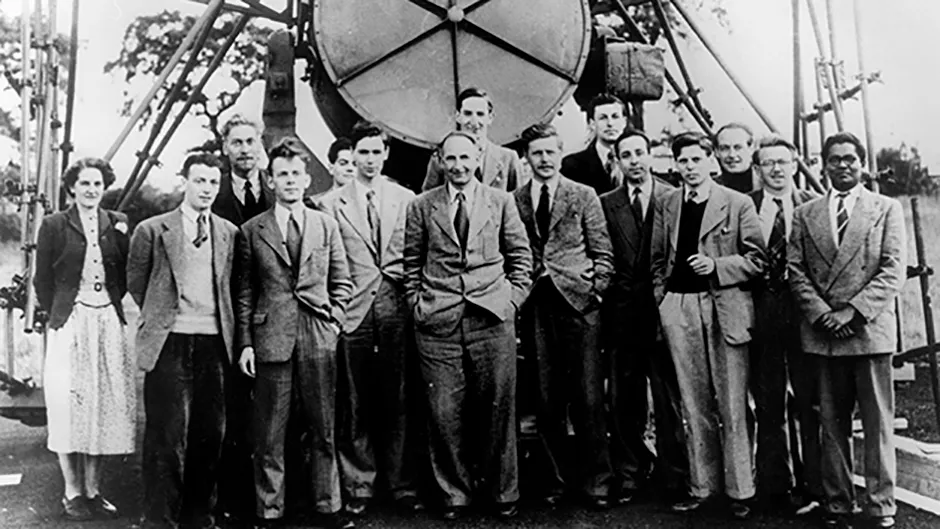Six structures at the famous Jodrell Bank Observatory have been listed by the Department for Digital, Culture, Media and Sport.The announcement comes on the 60th anniversary of the observatory's Lovell Telescope’s first light on 2 August 1957.
The observatory is located in rural Cheshire and is operated by the University of Manchester.
It was founded when astronomer Sir Bernard Lovell first carried out radio astronomy at the site in 1945.
It is one of the earliest sites in the world for radio astronomy, which allows astronomers to view the cosmos at radio frequencies and observe objects that would be normally invisible to human eyes.
Professor Tim O’Brien, Associate Director of the Jodrell Bank Centre for Astrophysics, discussing the 70th annivesary of the observatory in 2015. Image Credit: Jodrell Bank/The University of Manchester
The site’s Mark II telescope has been awarded with a Grade I listing, joining the observatory's main Lovell Telescope, which was listed Grade I in 1988.
The Mark II is the site’s second large-scale fully steerable radio telescope, built in 1962-64 and designed by Sir Bernard and structural engineer Sir Henry Charles Husband.
The Park Royal Building was built in 1949 and became the control room for Jodrell Bank’s Transit Telescope, later being designated as the control building for the Mark II. It has been listed at Grade II.
The Electrical Workshop was one of the first purpose-built research and teaching rooms at the observatory, constructed around 1949. It has also been listed at Grade II.
So too has the Link Hut, which was built around the same time as the Electrical Workshop to investigate extra-terrestrial radio signals.
The Control Building, built 1954-55, was used to guide the movements of the Lovell Telescope, and is the place where scientists tracked the carrier vehicle for the Sputnik I satellite and Luna 9 lander.
It has also been listed at Grade II.

The final listing is for the remains of the 71MHz Searchlight Aerial, which was developed in the mid 1940s by John Atherton Clegg.
It was used to track meteor showers at the behest of Sir Bernard Lovell.
Today only the mount survives, but stands nevertheless as a symbol of some of the first work done at Jodrell Bank.
Professor Teresa Anderson, Director ofthe Jodrell Bank Discovery Centre, says: “Jodrell Bank has welcomed millions of visitors, drawn by its landmark scientific structures.
"Science is a hugely important part of our cultural heritage and we are very pleased to see that recognised and protected with these new designations.”
